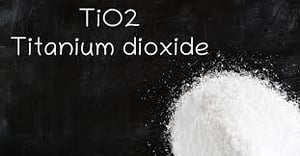Volta Finance Ltd (LON:VTA) is the topic of conversation when Hardman and Co’s Analyst Mark Thomas caught up with DirectorsTalk for an exclusive interview.
Q1: Your recent report sits behind a disclaimer. What can you tell us about that?
A1: It is just the standard disclaimer that many investment companies have. In essence, for regulatory reasons, there are some countries (like the US) where the report should not be read. In the UK, because CLOs are not a simple asset class, the report should be looked at only by professional/qualified investors.
Q2: You called your recent piece, Cash is king and the king is rocking and rolling. What can you tell us about it?
A2: Volta Finance is no different from any other investment company in that it identifies when the market has mispriced long-term cashflows. In this note, we examined its success in that current cashflows are at near-record levels and 2.7x the dividend payment. Looking forward, we reviewed why defaults may not rise to the level now built into loan prices – a view consistent with that of rating agencies and Volta – as well as the risks to this position. We noted that the current level of inflation is positive, as long as it is not sustained for too long. We also highlight their diversification and geographical exposure. Bearing in mind these issues, the discount is anomalous.
Q3: So, taking your first point first, what can you tell us about the higher cashflows?
A3: In several of our recent notes, we have highlighted how the market opportunities have allowed CLO vehicles to refinance their own debt instruments, while the assets (corporate debts) have not re-financed. This means that the profits of CLO structures increased, and so the cashflows to CLO equity holders have increased. As the holder of CLO equity instruments, their cashflows improved. We included a chart showing the annualised interest and coupon cashflow receipts received by them. The latest figure, as of August, is 21.1% of NAV, against a target dividend of 8% of NAV, showing that not only is the dividend very well-covered but that, on a cash-only basis, NAV growth would be expected. Historically, in non-crisis years, a yield of ca.12%-13% through cycle would be more normal.
Q4: What about inflation, and higher interest rates, and the resilience of cashflows going forward?
A4: The manager’s comment was “Inflation is our Friend”, as broadly spread inflation helps erode debt, as borrowers’ EBITDA continues to grow, and VTA’s debt is floating rate. Sharp rate rises can be problematic, but the starting position for corporates is very positive, with profits up 31% in 4Q’21 on 4Q’19, while corporate debt is up 15% over the same period. Corporate defaults are presently extremely low. Our note goes into detail of how the growing preponderance of well-financed private equity (PE) backing and covenant-light document should help. They have incrementally reduced risk with its diversification and will see upside on re-investment. Now, so far, I have only painted the positives, and, of course, things will get worse from here. The question is by how much. The market is pricing in, to Volta to quote Fraser from Dad’s Army “We’re Doomed”, when, as of today, the most probable outcome is that defaults will rise from around 0.6%/0.7% to probably 3% in Europe, and lower in the US. If that is the actual outturn, the probability is a sharp recovery in Volta Finance’s NAV and discount.
Q5: And what about the risk?
A5: Of course there are risks. The last few days/ weeks show how volatile markets can be. There is a macro risk to the downside, and sentiment is always hard to call. The key question is how much is in the price.





































